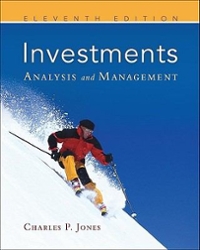ASSIGNMENT: This homework assignment is purely extra credit. If you do not do it, it will not hurt your grade in any way. If you do complete it, it will show up with as much as 10 points on the homework portion of the grade. For those who have missed a homework assignment, this is a chance to make that up. It doesn't carry the weighting of a test, but every point helps. Partial Crediting will be applied Background: A Universal life (UL) insurance policy frequently uses what is referred to as a portfolio rate when paying interest to a policyholder. (Most common form of return) This is when the company does the investing their portfolio) and pays a rate based on their return. You will recall I mentioned that a company might be earning 7.5% and will keep 1.5% and pay out the 6% as a portfolio rate. I also mentioned that today many companies are paying 3.5% to 4.5% and yet banks are only paying about 1%. The interest rate market has been dropping or remained a steady low for the last 11 years. So why are the life policies able to pay a higher rate? That is the result of how a portfolio rate works - and thus, the homework question: Homework Question: When companies pay based on a portfolio rate, what would cause the portfolio interest rate on a UL to perform better than the market in an extended declining interest rate market, and yet would perform worse than the market in an extended increasing interest rate environment? ASSIGNMENT: This homework assignment is purely extra credit. If you do not do it, it will not hurt your grade in any way. If you do complete it, it will show up with as much as 10 points on the homework portion of the grade. For those who have missed a homework assignment, this is a chance to make that up. It doesn't carry the weighting of a test, but every point helps. Partial Crediting will be applied Background: A Universal life (UL) insurance policy frequently uses what is referred to as a portfolio rate when paying interest to a policyholder. (Most common form of return) This is when the company does the investing their portfolio) and pays a rate based on their return. You will recall I mentioned that a company might be earning 7.5% and will keep 1.5% and pay out the 6% as a portfolio rate. I also mentioned that today many companies are paying 3.5% to 4.5% and yet banks are only paying about 1%. The interest rate market has been dropping or remained a steady low for the last 11 years. So why are the life policies able to pay a higher rate? That is the result of how a portfolio rate works - and thus, the homework question: Homework Question: When companies pay based on a portfolio rate, what would cause the portfolio interest rate on a UL to perform better than the market in an extended declining interest rate market, and yet would perform worse than the market in an extended increasing interest rate environment







